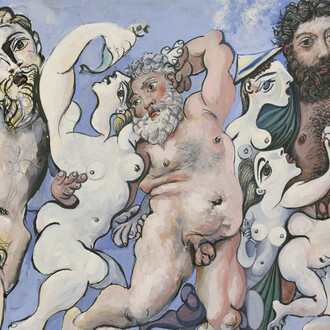As part of the Barcelona Gallery Weekend programme, ADN Galeria presents Glass ceiling, Regina José Galindo's second solo exhibition at the gallery. The show, which combines performance, video, and photography, denounces the physical wear and tear of work, and does it through a conceptual journey through Galindo's oeuvre. The exhibition will be open to the public from Thursday, September 18, at 12 p.m., and will feature the performance Glass ceiling by the artist at 7:30 p.m. at the galley.
In her work the artist explores the violence exerted by power structures around the world. These relationships are articulated around extraction, whether of natural resources or human labor, thus creating contemporary forms of slavery. To explore this, Galindo uses one of the most common and effective resources in her discourse: the use of her own body as the protagonist of the action. A political and social body that combats classic, stereotypical, deliberately reductive, and conditioning representations of women.
In this way, Regina transforms her projects into spaces where the body itself and its performance appear as an effective aesthetic-political strategy. This is evident in the examples featured in the present exhibition, which range from the beginnings of her production to a performance specifically commissioned for this occasion. Glass ceiling questions the notion of work associated with female labor inequality and is explored by the artist in her work of the same name (2025). An installation performance that highlights both the limitations women face in a global workplace that often discriminates against them, as well as the discrimination suffered by women who do not conform to privileged standards.
Beyond this first work, we find Angelina (2001), Regina José Galindo's first durational performance. In Guatemala, domestic work is mostly done by poor indigenous women. Dressed in a maid's uniform for a whole month, she goes about her daily routine under a new identity. Galindo undermines social boundaries and makes the barriers of gender, class, and race visible thanks to carrying out her daily routine under a new identity. The photographic documentation shows Galindo in different settings: a religious procession, a food and clothing market, an ATM, a restaurant, a bar, working in front of a computer. Some of these images seem “natural,” while others strike the viewer as jarring, revealing the classist and racialized nature of certain activities and environments.
In Aún no somos escombros (2016), Regina José Galindo appropriates the historical memory of the women who, after the end of World War II, cleared the rubble from buildings in German cities destroyed by bombing in order to clear the streets or recover materials for new construction. The image of smiling women working hard, determined to clear the rubble with shovels and buckets or with their bare hands, is present in many historical reports, school books, film and television documentaries. In fact, in the postwar years became a constituent element of German history and an icon of its collective memory.
In contrast to this work, en No aceptamos sus disculpas (Wir akzeptieren eure Entschuldigungen nicht) (2019), a group of women armed with axes and other tools destroy a BMW after the company apologies for its ties to Nazism. A reversal action in two different eras of women's relationship to an uncertain future and the symbols of patriarchal power and capitalist exploitation.
Also alluding to the human body as waste or debris, we find a work such as Paisaje (2012), in which the artist stands impassively with her back to a man digging a grave, waiting naked until she is covered by dirt. This action echoes the performance she did that same year, where she invited the audience to take her body out of a refrigerated mortuary tray so they could see her “goosebumps.” A year later, Galindo got into a mortuary niche that she had closed off with a wall of bricks and cement. The audience knew she was still there because they could hear her breathing, amplified by a microphone. In this way, the artist, trapped in a tomb, describes the harshness and coldness of death, or teaches us how vulnerable a stone is, and shapes our small notion of justice by confronting it with our concept of art.
To finish this conceptual journey, as part of the exhibition Descolonicemos el mundo, Centre d'Art la Panera commissioned the performance Fruta amarga (2024), in which Galindo denounces the vulnerable situation of seasonal fruit pickers in Lleida, most of whom are migrants. Performed in Lleida's Plaza Ramón Berenguer IV, Fruta amarga highlights the racism and difficult conditions faced by these workers, who often sleep on the streets, unable to access housing due to the collapse of shelters and landlords' refusal to make them available to these workers.













![Saul Steinberg, The museum [El museo] (detalle), 1972. Cortesía del Museo de Arte Abstracto Español](http://media.meer.com/attachments/dfbad16c22c5940b5ce7463468ac8879f3b4bf23/store/fill/330/330/042ecf3bcd2c9b4db7ddbc57cb32e950c095835f7b5cd55b6e1576a6e78c/Saul-Steinberg-The-museum-El-museo-detalle-1972-Cortesia-del-Museo-de-Arte-Abstracto-Espanol.jpg)


